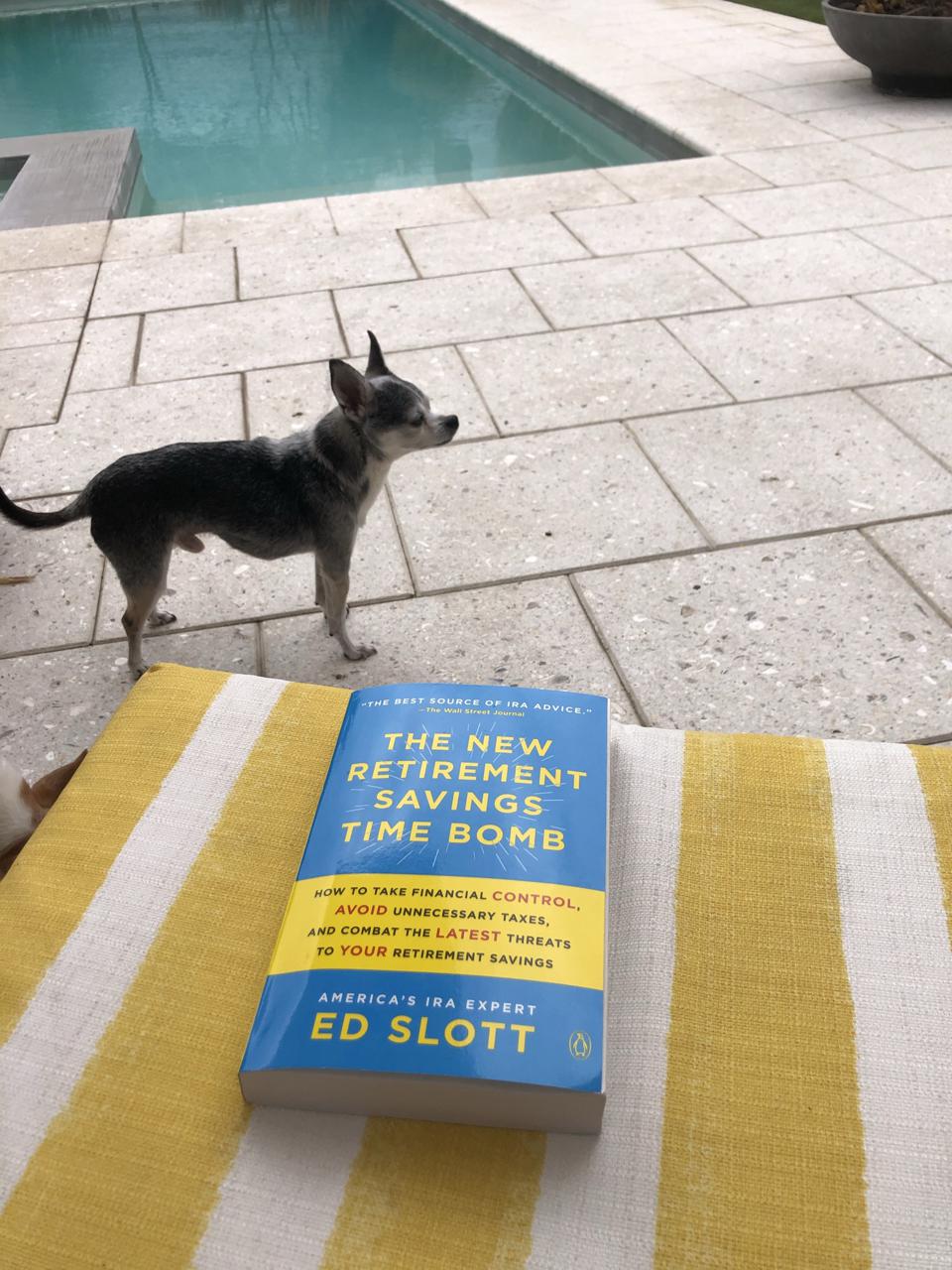
Steps to avoid getting hit with a tax time bomb in retirement.
getty
Taxes don’t go away when you retire. In fact, for many of you reading this post, taxes may be even more onerous in the future once you are retired. Ignoring the ticking time bomb of taxes in retirement could dramatically lower your standard of living in retirement. As a fun financial planner who writes about having a happier, healthier, and wealthier retirement, minimizing taxes is a quick way to improve all three of these areas.
In his new book, “The New Retirement Savings Time Bomb,” IRA expert Ed Slott shares how to take financial control while avoiding unnecessary taxes in retirement. Some of what you think you know about taxes in retirement is wrong. Some common-sense tax strategies could even cause you to pay more taxes in retirement and on your inheritances. If you are a money nerd and love tax law, give this book a read. If not, look for a fiduciary financial expert to help you with any tax time bombs in your retirement plan.
I do want to share one section of the book where Slott shares his 5-step action plan to defuse the retirement savings time bomb. You should take a proactive tax planning approach you can use to avoid having your life savings, aka retirement savings, from being taxed to death.

The New Retirement Savings Time Bomb
David Rae
Step #1 Time It Smartly
Slott suggests you have a plan for when to take retirement contributions. Many people spend down their Roth IRAs and taxable investment accounts before tapping their IRAs. This may cost you the opportunity to play with the IRS tax brackets and tax deductions you may benefit from while pushing your income into higher and higher tax brackets.
Step #2 Secure It
You may have heard of the “Secure Act” while you were locked at home during the global coronavirus pandemic. The SECURE Act has changed many of the rules when it comes to retirement income planning. Most notably for retirees, it severely limited who can benefit from a stretch IRA. For many non-spousal beneficiaries, this will change how you need to handle your inherited IRA and the taxes you will owe on withdrawals. According to Slott, you will need to revisit old retirement planning strategies and likely implement a “new planning alternative to avoid the tax hit to your beneficiaries.”

You should take pride in having more Tax-free income in retirement.
getty
Step #3 Roth It
The book asserts you should take advantage of the Roth IRA whenever possible, as well as exploring Roth Conversion. This is assuming you have the money to pay the taxes due on Roth conversion.
As a reminder, you will not receive a tax deduction when you contribute to a Roth IRA or Roth 401(k), but your money will grow tax-free, and if you follow the basic Roth IRA rules, you can get withdrawals tax-free as well.
For those eligible to contribute, the Roth IRA is the single, biggest gift Congress has ever given to the American taxpayer. The tax-free income in the future from a Roth IRA is the biggest benefit here. It can also help protect you from future tax increases. While I don’t have a crystal ball, I do expect taxes to be higher in the future.
There are no income limits for the Roth 401(k), but there are still contribution limits. Most high-earning households will make too much money to fund a Roth IRA in a typical year.
When trying to choose between a Roth IRA and a traditional IRA or Roth 401(k) and traditional 401(k), as a very rough rule of thumb, if you are in the 24% tax bracket or below, you should consider the Roth. For those in the higher federal tax bracket, you will likely come out ahead with the traditional options. I also know that Americans in the higher tax brackets are more likely to seek out expert tax planning guidance to minimize taxes on their retirement income after working to minimize it during their working years.
Step #4 Insure It
In the book, Slott states, “While IRAs may be moving to the trash heap for estate planning, life insurance gets bumped up to the top of the list of tools for creating your perfect estate plan. Life insurance may be the new stretch IRA.”
With a properly set up life insurance plan (I call it the Rich Person Roth), you can provide your beneficiaries with a larger inheritance and smaller tax bill. In many cases, ultra-high net worth households will use life insurance proceeds to pay unavailable estate taxes and income taxes on assets, like an inherited IRA.
With the Rich Person Roth, you can build a cash value tax-free. This nest egg can be turned into a tax-free retirement income. From there, when you pass away, your beneficiaries will also receive the proceed tax-free.
Step #5 Avoid the Death-Tax Trap
Throughout the book, we hear how the estate tax is always in flux. Right now, spouses can pass an unlimited amount of assets between each other. In 2021, the estate tax only applies to estates larger than $11.7 million dollars. This can easily be doubled for married couples, with a few tax forms – this step is often missed.
Statistically, few inheritances will get hit with the estate tax this year. But when they do, the bills can be substantial if proper estate planning is not done. The federal estate tax tops out at 40%.
The current estate tax exemption sunsets after 2025. (Meaning many more people could get hit with the estate tax in the future). Your guess is as good as mine about what Congress will do as far as rates and exemptions at that time.
As they say, nothing is certain except for death and taxes. But hopefully, we can avoid you dying of a heart attack when you receive an estate planning tax bill. As tax laws change, your estate plan will likely need to be tweaked. If you are receiving a large inheritance, work with a fabulous financial planner and CPA to keep the death tax at bay and allow more of your life savings to get where you want it.
